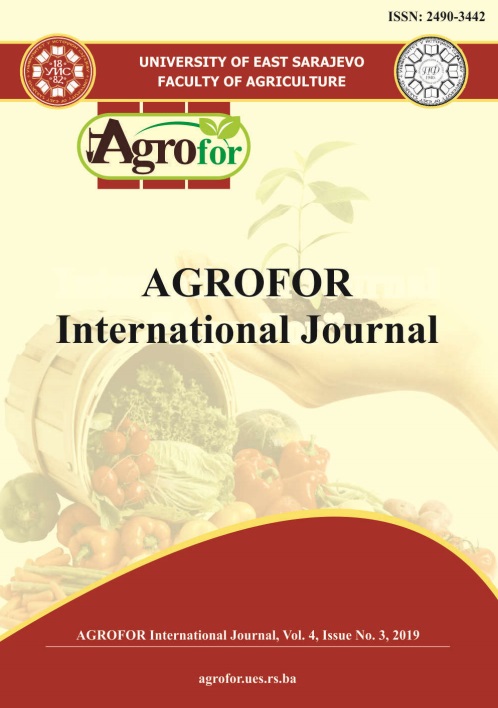CHEMICAL COMPOSITION OF CARDOON (CYNARA CARDUNCULUS L.) GROWN IN SOUTH BULGARIA
DOI:
https://doi.org/10.7251/AGRENG1903100AAbstract
Comparative research has been conducted to allow us to determine the content of macro- and microelements in the vegetative and reproductive organs of Cynara cardunculus L. and quality of Cynara cardunculus L. oil. The experiment was performed on an agricultural field near Plovdiv (South Bulgaria). The contents of macro- and microelements in plant materials (roots, stems, leaves, seeds) and oils were determined. The oils were extracted using a Soxhlet apparatus from seeds of Cynara cardunculus L. The quantitative measurements were carried out with inductively-coupled plasma (ICP). Oil fatty acids characterization for unsaturated and saturated acids was performed by gas chromatography. The cardoon shows adaptability to local conditions and can be grown in southern Bulgaria and used for oil production. All plant parts of the cardoon are a rich source of macro and microelements and exhibit high nutritional value. The distribution of macro and microelements in the cardoon organs is selective, specific for the individual elements. Cd, Cu and Fe are accumulated in the roots, K - in the stems, Pb and Ca - in the leaves, and Zn, Mn, Mg and P - in the seeds. Cardoon seeds were a rich source of macro- and microelements (K, P, Mg, Ca, Fe, and Zn). Cardoon oil was abundant in unsaturated fatty acids (linoleic (61.67%%) and oleic acids (22.82%)), followed by palmitic acid (10.50%) and stearic acid (3.29%). Cardoon oil has a P/S index higher than 1 (4.2), which indicates that oil can have a good effect on human health and are oils suitable for consumption. Cardoon oil is a rich source of polyunsaturated linoleic fatty acid with potentially beneficial therapeutic activity.

